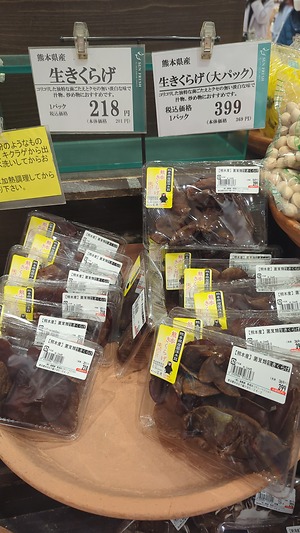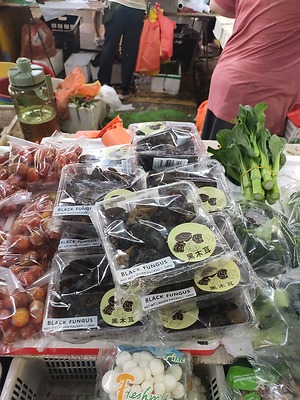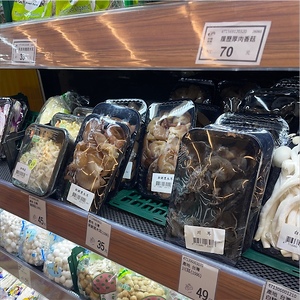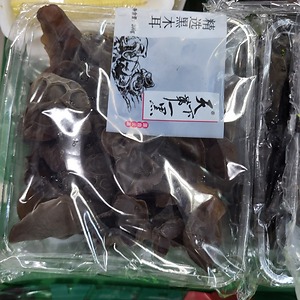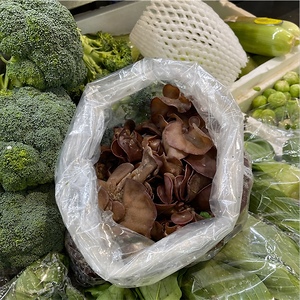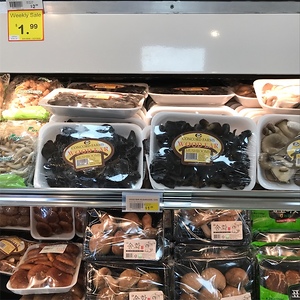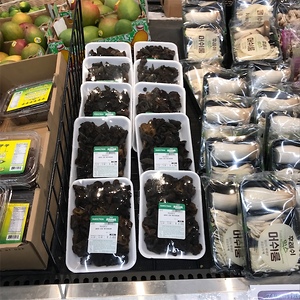

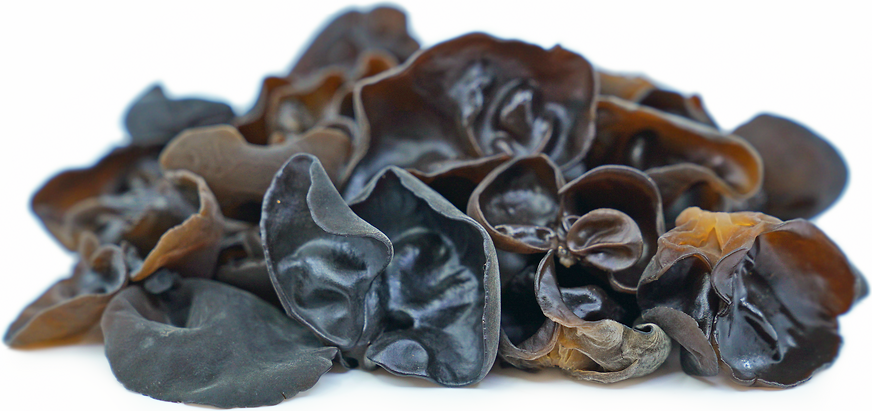
Wood Ear Mushrooms
Estimated Inventory, 5 lbs : 0
This item was last sold on : 06/05/25
Description/Taste
Wood Ear mushrooms are small to medium in size, averaging 3-8 centimeters in diameter, and are curved and wavy with an ear-like or cup-like shape. The fruiting bodies are brown to dark brown with a slippery or gelatinous texture and can be made up of smooth, wavy edges or many folds and wrinkles with some veining. With age, the gill-less and stemless fungus darkens, and the spores range in color from yellow, cream, to white. When cooked, Wood Ear mushrooms are firm, crunchy, and toothsome with a mild, musty flavor.
Seasons/Availability
Wild Wood Ear mushrooms are available from early summer through early winter, while the cultivated versions are available year-round.
Current Facts
Wood Ear mushrooms, botanically classified as Auricularia auricula-judae, are an edible ear jelly fungus that is a member of the Auriculariaceae family. Also known as the Cloud Ear, Tree Ear, Black fungus, and Jelly Ear, Wood Ear mushrooms are found in humid, temperate forests. The mushrooms grow in groupings, predominately on elder trees, but they have also been found on dead and living trees such as ash, spindle, and beech. Wood Ear mushrooms are also cultivated around the world on bags of sawdust and are dried and exported for commercial use. Wood Ear mushrooms are utilized for their chewy texture rather than their mild taste and are a popular textural element in many Asian soup dishes.
Nutritional Value
Wood Ear mushrooms contain iron, protein, fiber, and vitamins B1 and B2
Applications
Wood ear mushrooms are best suited for cooked applications such as boiling, stir-frying, and sautéing. Before cooking, the fungus should be rinsed, and any tough patches should be removed. Used for their chewy and toothsome texture, they can be added to soups, salads, or stir-fries and readily absorb accompanying flavors. Wood ear mushrooms are commonly added to Chinese hot and sour soup and to Szechwan and Hunan cuisine to soak up the spicier flavors. Outside of China, Wood Ear mushrooms are most commonly found in dried form and can easily be reconstituted. To rehydrate, the fungus should be soaked in water for at least half an hour. Wood Ear mushrooms pair well with potatoes, fermented black beans, green onions, onions, ginger, soy sauce, red wine vinegar, sesame oil, cilantro, parsley, bay leaves, allspice, snow thistle, cucumber, bamboo shoots, green peas, tofu, pork, ham, shrimp, and crab. They should be used immediately and will only keep for a couple of days when wrapped in paper towels and stored in the refrigerator.
Ethnic/Cultural Info
In Asia, Wood Ear mushrooms are known as Yung ngo, Kikurage, Mokurage, and Aragekikurage. The Chinese call it "Hei mu-er,” and consider the Wood Ear mushroom to be both edible and medicinal as it has been used since the Tang dynasty from 618-907 BCE. In China, Wood Ear mushrooms are added to dishes to help improve breathing, circulation, sore throats, and wellbeing, and to help reduce colds and fevers.
Geography/History
Wood Ear mushrooms are native to Asia and select islands in the Pacific Ocean and have been growing since ancient times. First classified in 1753 and then reclassified multiple times through 1888, today most major Asian countries cultivate Wood Ear mushrooms and export the fungus in dried form around the world. Wood Ear mushrooms can be found fresh at local markets in Asia and in dried form in Asia, Europe, Indonesia, the South Pacific, Australia, Africa, North America, and South America.
Featured Restaurants
Restaurants currently purchasing this product as an ingredient for their menu.
| Cellar Hand | San Diego CA | 334-689-2388 |
| Four Seasons Residence Club | Carlsbad CA | 760-603-6360 |
Recipe Ideas
Recipes that include Wood Ear Mushrooms. One
| The Woks Of Life |
|
Lotus Root Stir-Fry |
| Cooking Channel |
|
Handmade Rice Noodles Filled With Pork and Wood Ear Mushrooms: Banh Cuon Nong |
Podcast



